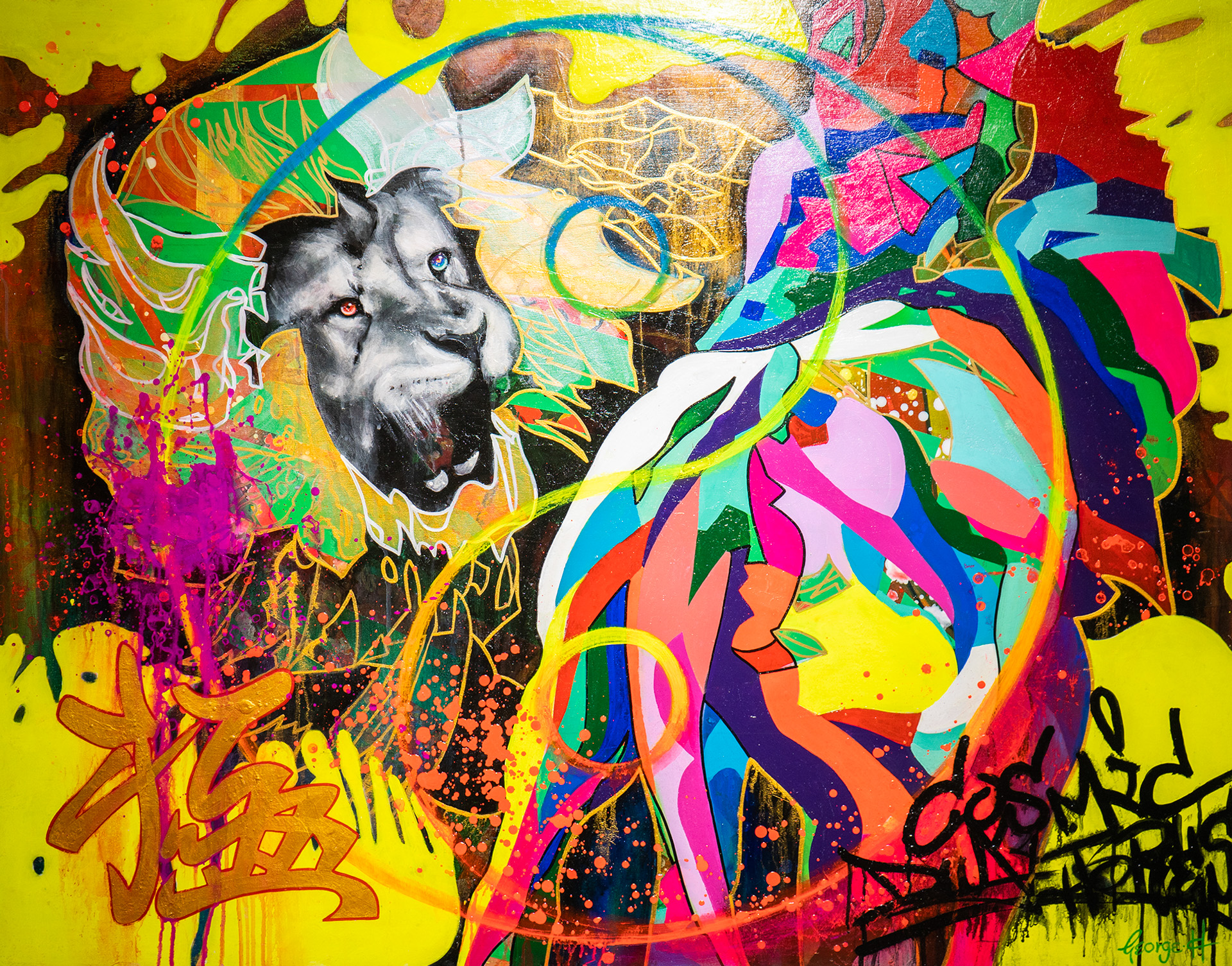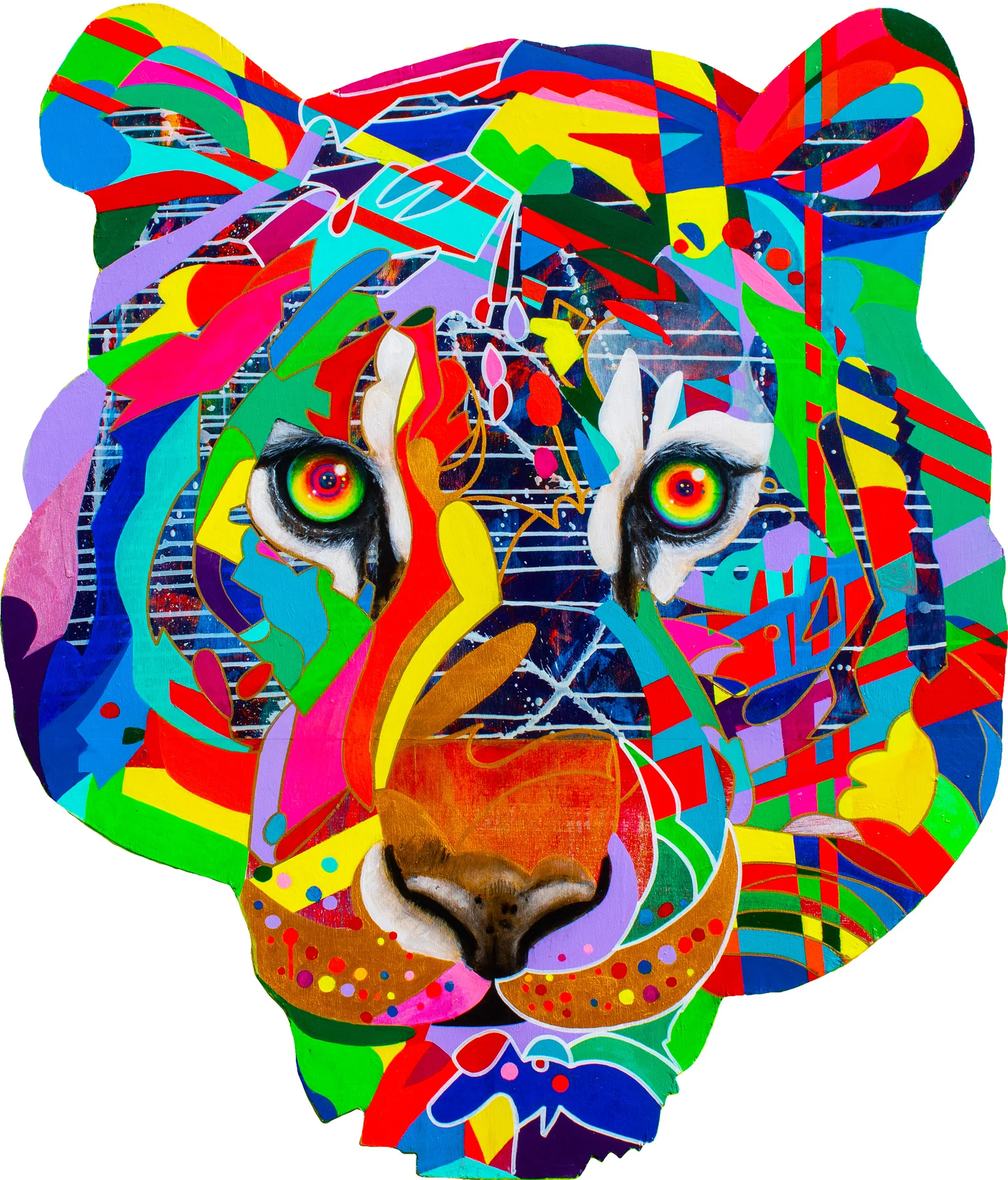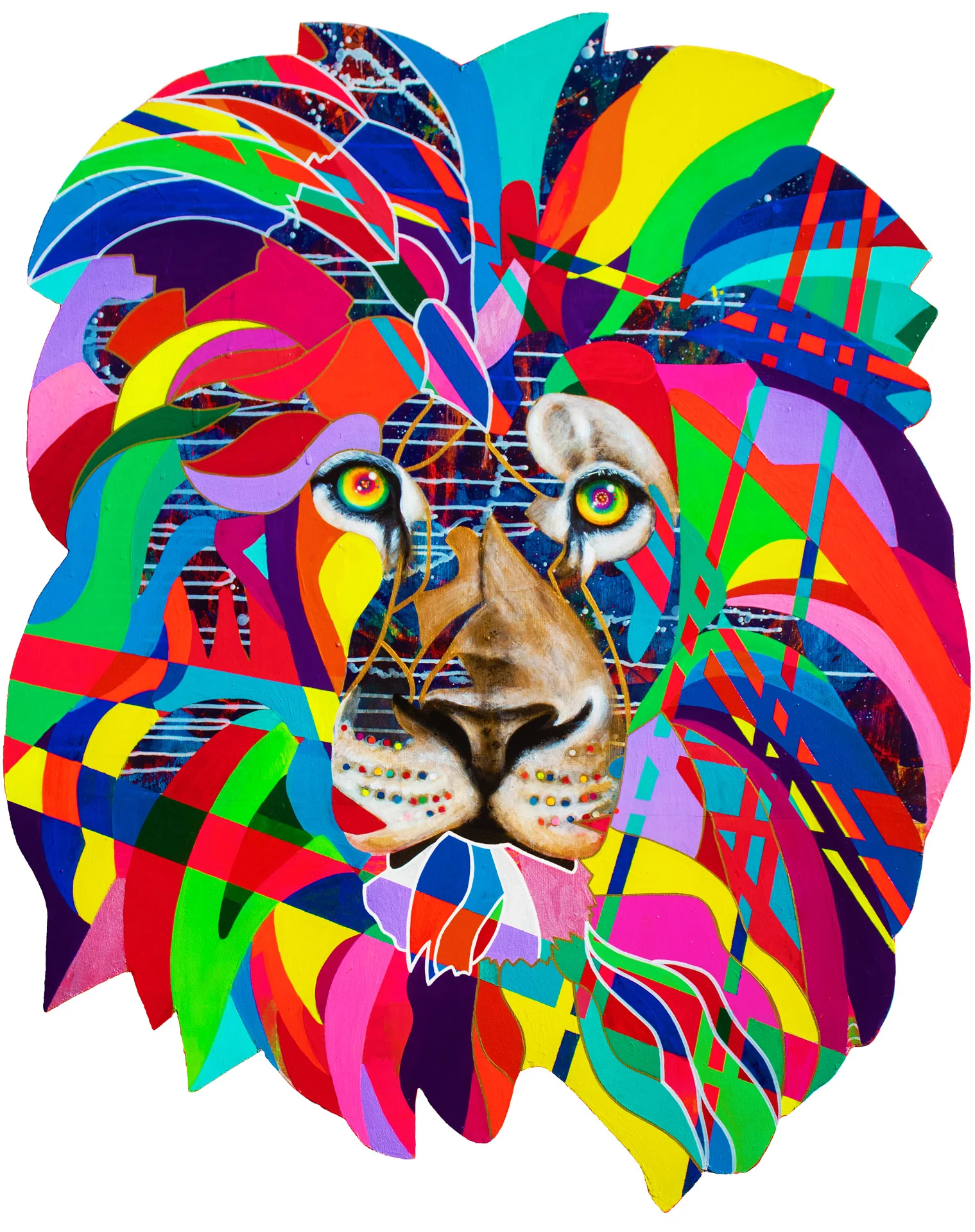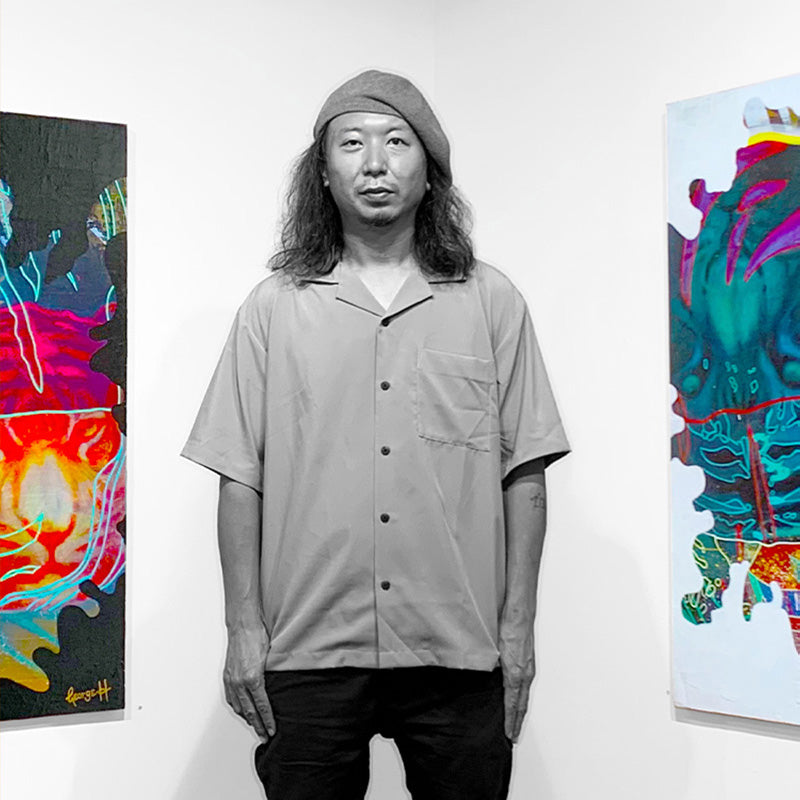A love of nature and wildlife
George Hayashi is an artist whose works are collected by the Consulate General of Japan in Shanghai and the Japanese Consulate in Taiwan, and who has participated in the Shanghai Art Fair as a representative of Japan. He has also exhibited at casino hotels in Macau and the world-class bar "Speak Low" in Shanghai. He is particularly popular in Asia, where he has been involved in creating murals for facilities for the sports brand Nike.
Born in Tokyo in 1978. His grandmother was the ink painter Hayashi Soki, and he grew up in an environment with many relatives involved in the arts, including his mother, a fashion designer and Japanese painting artist.
"I was surrounded by art supplies and was taken to many art galleries, but it was somehow strict, and my grandmother was particularly strict, so I didn't have any freedom or fun," he said, explaining that he painted in secret. He also said that he didn't have a good impression of the painting industry, and thought he would pursue a career in music instead of painting.
This distance from the artistic world nurtured Hayashi's artistic sensibility. He started out watching American cartoons and movies as a child, and was strongly influenced by the precise use of color by artists such as Jakuchu Ito, Hokusai Katsushika, Tadanori Yokoo, and Taro Okamoto. It is interesting to note that he was fascinated by Japanese painters rather than Western paintings, which could be said to be the result of his bloodline.
"I first saw Ito Jakuchu when I was around 20 years old, influenced by street culture and also doing graffiti. I found the flat, depthless worldview of his prints to be visually interesting and I thought that's what I wanted to do. I was also impressed by Tadanori Yokoo's work, in which powerful information was contained in what may seem like simple, two-dimensional expressions."
The picture plane lacks the three-dimensionality and shadows that are incompatible with Western paintings. Hayashi is impressed by the intricate design-like composition of the screen, as exemplified by Jakuchu's "Birds, Animals, Flowers and Trees Screen," which depicts a paradise of plants and animals using a mosaic pattern of over 80,000 squares, each with its own separate section.
Freedom from exploitation by anyone or anything
Hayashi is attracted to the energy of nature and the instincts and lifestyles of wild animals, and creates his works with the motto of "NOMAD HEART". He frequently uses lions as a motif because he sympathizes with their lifestyle of not having a territory, but rather increasing the number of their companions by migrating to places where it is easier to live. They are placed as a symbol of nomads, who are not trapped by the sameness of their own narrow range and escape from the centralized center.
The theme of this exhibition, "COSMIC DUAL FORCES," is the "Yin-Tai-Ki" of Feng Shui. The static energy "Yin" stored inside and the dynamic energy "Yang" released outside are two sides of the same coin, and the theory that all things in heaven and earth exist in balance between Yin and Yang raises questions about our relationships with others and the nature of the world. In addition to new works, Hayashi will also exhibit a work that pays homage to a famous painting he loves (this time, he will create a pop approach to "The Last Supper"), separate from the theme. Approximately 15 pieces will be on display.
"I want to depict what lies behind the energy of animals and nature. Even things that appear quiet can be intense, and even things that appear intense can have calm underneath. The world cannot be viewed from a one-sided perspective," he says, using his imagination to see what lies behind the phenomena he sees.
In the work "COSMIC DUAL FORCES01," two lions face each other with opposing forces. At first glance, they seem to be enemies, but Hayashi depicts them living apart from centripetal conflicts such as ideology, relying on each other and complementing each other while respecting each other's freedom. This depicts a nomadic worldview in which each person is determined to stand firm against movements that deny their freedom, and in which living freely includes aggression. This also confirms the sense of distance in coexistence with others, and the "space" and margins in Japan.
Like Jakuchu, who had a deep reverence for the vitality of living things, George Hayashi's paintings are driven by his reverence for animals and nature. Animals and nature simply exist there, regardless of the meaning that humans give them. Even in human society, each person exists fundamentally unrelated to the others. At the same time, we are connected by various relationships by chance, which can be severed at any time. The reason we feel the raw reality of nature and animals is because they show us this in their bare flesh.
Living the reality of the dual drama of yin and yang
With the emergence of the Internet and its evolution into SNS, it was thought that an ideal communication society would arrive. However, while we expected to be connected by open and cross-sectional relationships, it is undeniable that closed spaces of mutual surveillance have been created, and divisions are progressing. Gilles Deleuze said, "Creation has always been an activity that differs from communication," and advocated the necessity of non-communication. Creativity is realized by having the opportunity and space to cut off communication.
Hayashi, who had once kept his distance from his grandmother in the field of art, thought, "I'll regret it if I don't do it," so in his mid-20s, he became an apprentice to her and studied ink painting. He learned the aesthetics of white space and omission, and says, "I developed a style that interweaves the concrete and the abstract." The intermingling of colors and the overlapping of the concrete and the abstract are depicted as the white space between nature, animals, and modern society, where there is too much human intervention, and even when there is too little.
George Hayashi aims to bring to light the reality of living a dual drama of stillness and movement, yin and yang, in a suffocating, ``stupid'' society where there is no room for anything, and by creating space, to create a free and intelligent society in which everyone can demonstrate their individual abilities.






